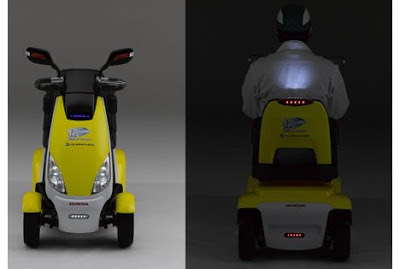What is ASV?
ASV vehicles are equipped with systems that use advanced technology to help drivers drive safely. The ASV project, conducted under the auspices of the Japanese Ministry of Land, Infrastructure, Transport and Tourism, with the collaboration of industry, academia and government. Currently, in Phase 4 (2006-2010).
Honda is involved in the project since Phase 1 (April 1991-March 1996). Some of the most important technologies that have the ASV are the Inter-Vehicle and Road-to-Vehicle Communications (Communication Vehicle to Vehicle and Vehicle Highway), which have been already successfully tested on public roads. Honda has developed this technology within the ASV program in Japan, and is currently involved in projects in this country, in Europe and the United States. The ASV-4 system uses a wireless communication unit (without cables) to determine the position and direction on cars and motorcycles, and provide information to drivers about approaching vehicles or obstacles in the road. This follows the introduction of ASV-3 technologies in 2005, and development ASV-4 represents extensive research, data collection and collaboration in the field of advanced security systems. One of the key technologies that incorporated Honda ASV is the Human-Machine Interface (HMI).
In another example of his involvement in safety, Honda has presented in Japan all developments made in this technology, which is the interface between driver and machine. Honda has shown its newest public exposure in the ITS-Safety 2010 (Intelligent Transportation Systems) is in Tokyo, which has released the latest in its ASV, including automobiles, motorcycles and electric vehicles adapted for the physically challenged mobility or with slight disabilities, all equipped with active safety technology and preventive. Based on extensive research, Honda has developed a HMI logical, simple and intuitive, allowing for quick and easy recognition.
In safety critical situations, warnings will be visual and auditory. The visual HMI is located in the upper edge of the instrument panel, as close as possible to the line of sight, allowing the driver to grasp the information easily and warnings without having to take his eyes off the road.
The intensity, color and position of the lights provide intuitive information about the importance and the approach of danger. To raise awareness of the driver is issued inside the helmet an audible as spoken text, thanks to a Bluetooth ® connection between the hull and the system board. This advanced HMI system contributes to improve safety on the motorcycle.
The ASV, equipped with the latest technologies in preventive and active safety are designed to exchange information on speed, position and other data between vehicles ("vehicle-to-vehicle" communications), as well as between the vehicle and the road infrastructure (vehicle-to-infrastructure), to provide motorists across the information that might be helpful to prevent accidents.
The model is based on the research of Honda ASV in the Japanese market, the Odyssey, represents the next level in the development of their communication systems vehicle-to-infrastructure. In the area of motorcycles based model has been chosen as the Forza, which also represents a further step in the evolution of the communication system vehicle-to-vehicle developed from preventive safety technologies and new work designs FACE and LONG, that make motorcycles more visible and identifiable with other drivers. In addition, the electric vehicle adapted IT Monpal Honda 4 has also been equipped with wireless technology to give it the advantages of communications vehicle-to-vehicle.
~~~
~~~



No comments:
Post a Comment